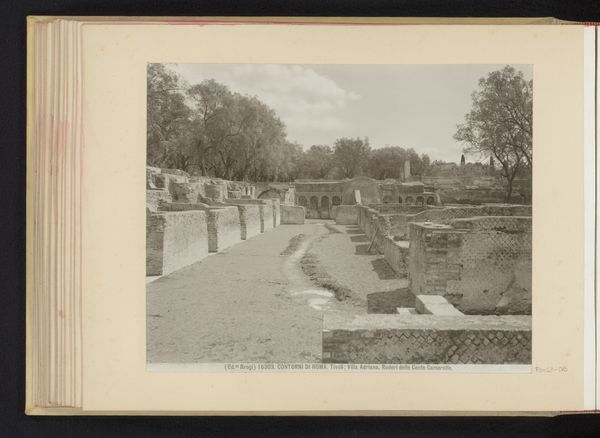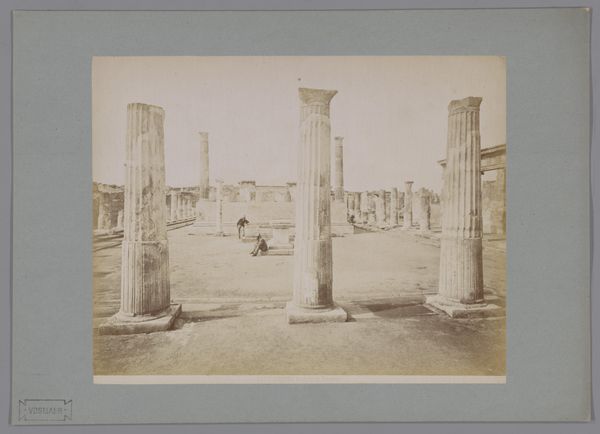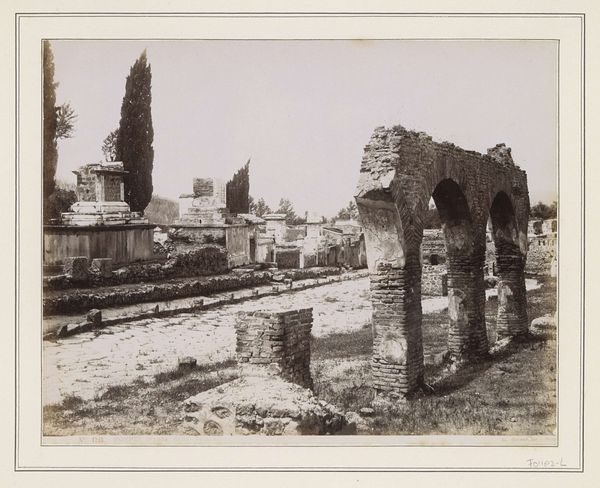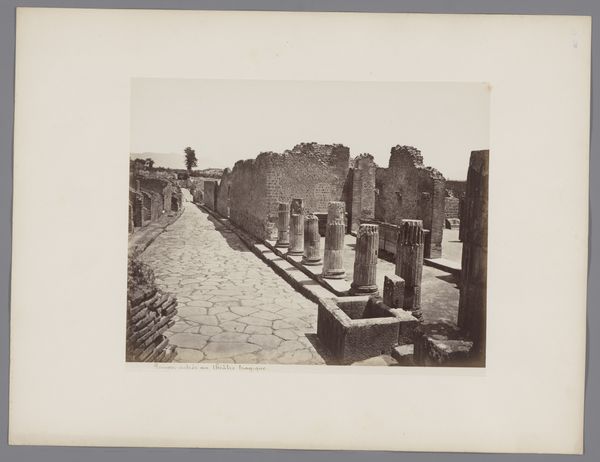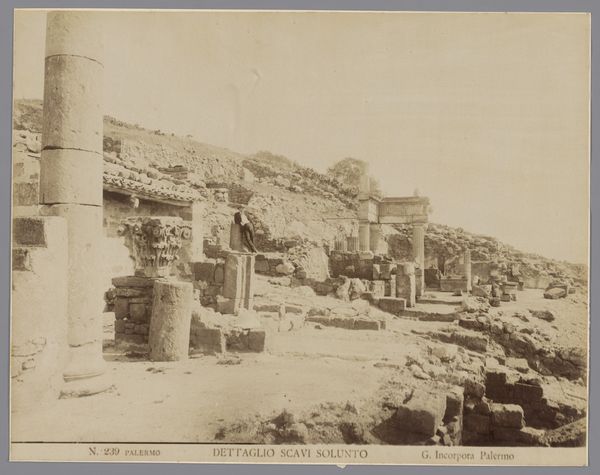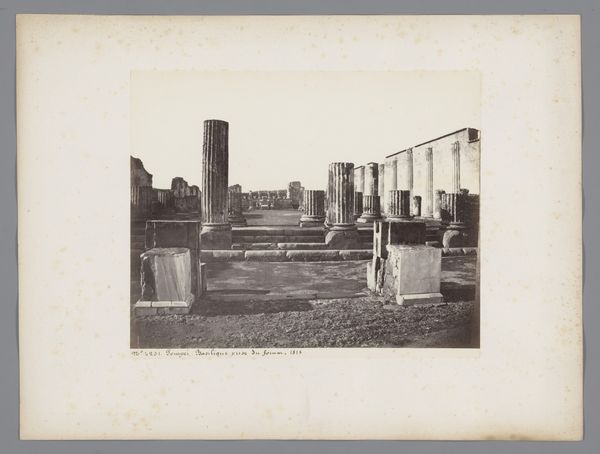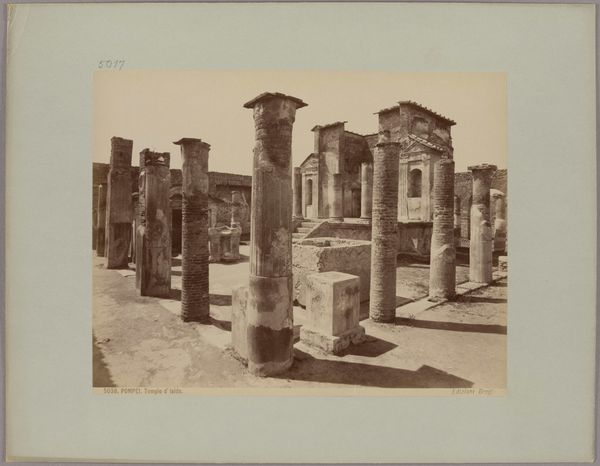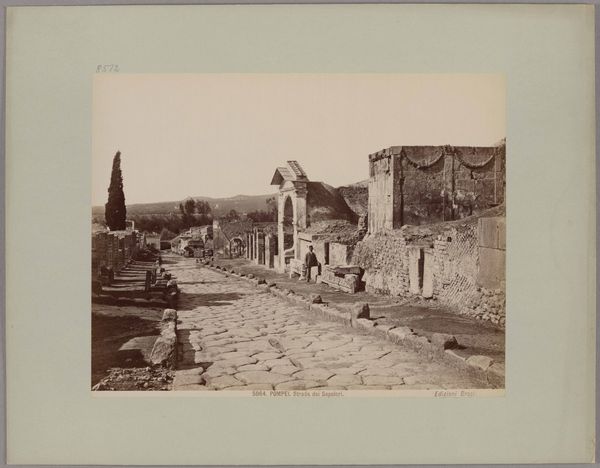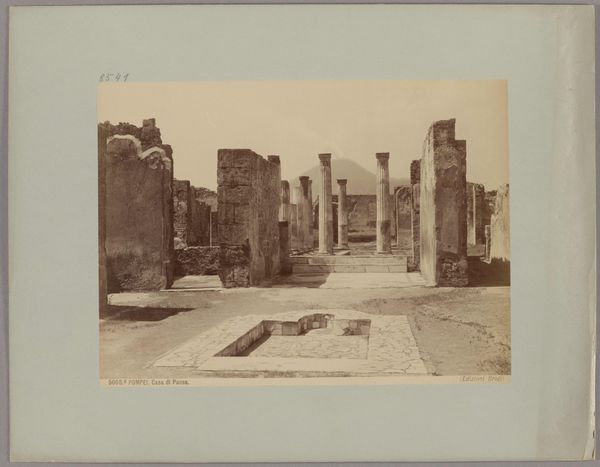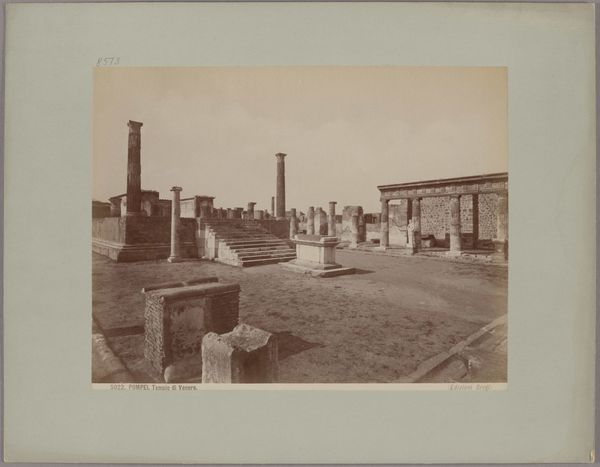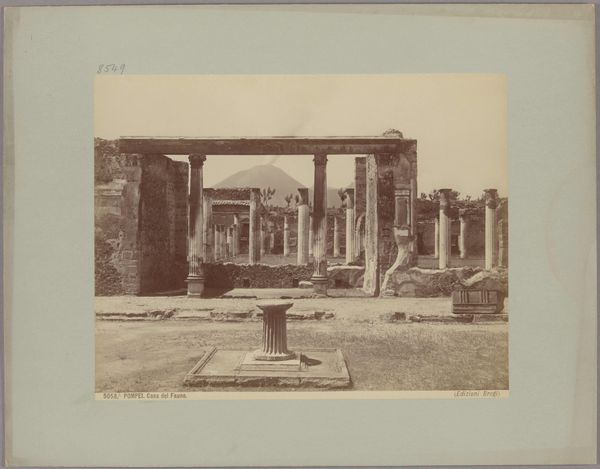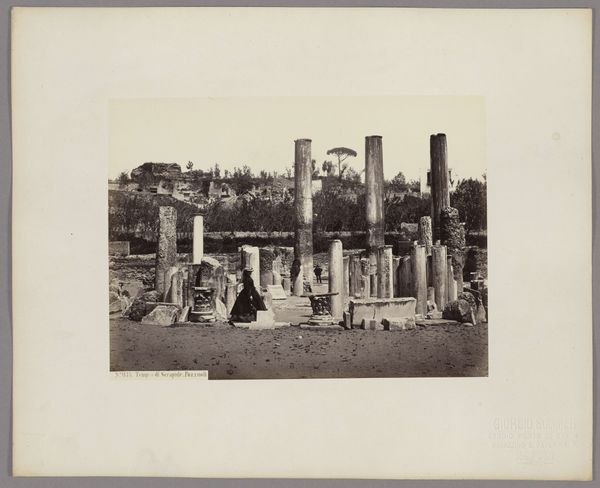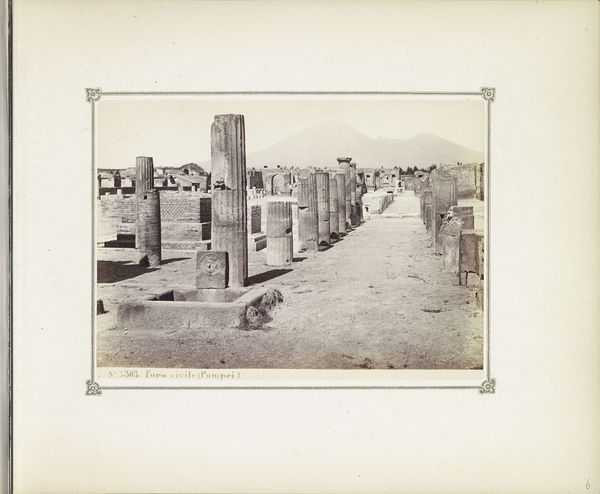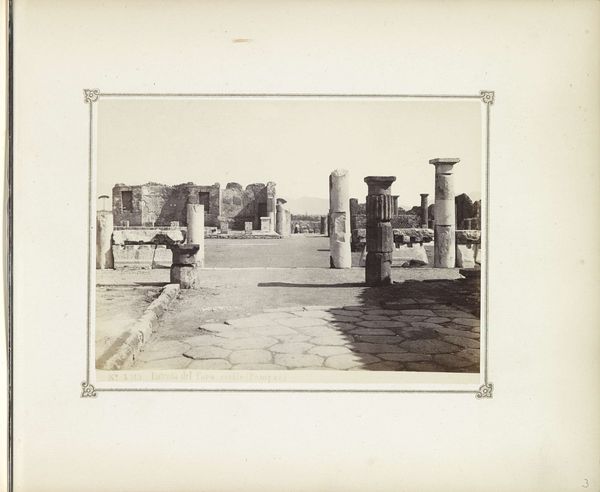
albumen-print, paper, photography, albumen-print, architecture
#
albumen-print
#
landscape
#
paper
#
photography
#
ancient-mediterranean
#
albumen-print
#
architecture
#
realism
Copyright: Public Domain
Editor: Here we have Giacomo Brogi's photograph, "Pompeii, Sepulchre Road," created sometime between 1870 and 1880. It's an albumen print. There's something very haunting about this scene. What do you see in this photograph? Curator: I see a fascinating record of labor and materiality. Consider the production of albumen prints themselves: the physical act of coating paper with egg whites, the careful exposure to light, the chemical processes. It’s a real alchemy of material and labour to even get this image in our hands. Editor: Absolutely. The albumen print gives it a unique warmth, almost like a sepia tone, right? Curator: Precisely. And beyond the photographic process, consider what is being photographed: the ruins of Pompeii. These ruins are also, in their own right, products of ancient labour –the quarrying of stone, the construction of monumental structures and now we see this interplay of ancient craft with 19th-century production and image-making technologies. This convergence becomes a potent commentary. Editor: It makes me wonder, what was Brogi trying to capture about labour and loss in a commercial photograph destined for tourist consumption? Curator: A key question, given these were mass produced for the burgeoning tourist industry. Brogi capitalizes, literally, on ruin. He's not just selling an image, but the decay and story that inherently connects to the manual labour involved in both Pompeii's creation, destruction and eventual unearthing and subsequent material commodification in print. What is then our ethical relationship to a history forged with so much forced labour? Editor: So, he's really implicated in a chain of labor that spans millennia, from the original builders to his own darkroom? Curator: Exactly! Each stage contributing to the narrative of consumption and the complex social context woven into the image itself. Editor: That's a powerful thought. I will definitely be considering all the hands, processes, and economics involved in art's production going forward!
Comments
No comments
Be the first to comment and join the conversation on the ultimate creative platform.
